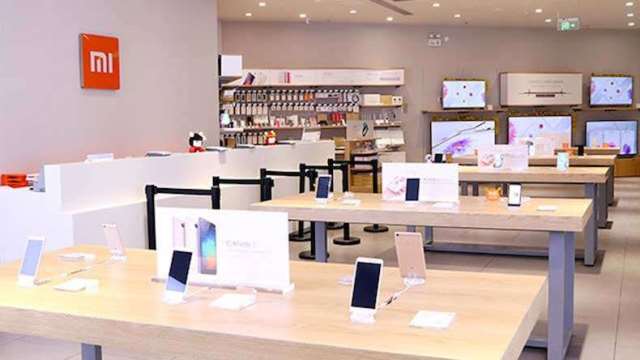Xiaomi, which lost significant share in India smartphone market, is stepping up its efforts to boost sales from retail stores.
 Xiaomi has shipped 5 million smartphones in India grabbing 16 percent share during the third quarter of 2023, according to research report from Canalys. Xiaomi is in fourth position in the India smartphone market in Q1 2023.
Xiaomi has shipped 5 million smartphones in India grabbing 16 percent share during the third quarter of 2023, according to research report from Canalys. Xiaomi is in fourth position in the India smartphone market in Q1 2023.
Xiaomi, a prominent smartphone manufacturer based in China, has recognized the significance of the offline retail segment in India, despite the rapid growth of e-commerce in the country, Reuters news report said. This analysis examines the reasons behind Xiaomi’s shift in focus towards retail outlets and the potential benefits it can bring to the company’s sales strategy.
“Our market position in offline is substantially lower than what it is online,” Xiaomi’s India head, Muralikrishnan B., said in an interview. “Offline is where you have other competitors who have been executing fairly well and have a larger market share.”
Samsung India recently inaugurated its largest Premium Experience Store in Telangana at the Inorbit Mall in Hyderabad. The new store highlights Samsung’s entire products around Samsung’s connected ecosystem SmartThings, smartphones, laptops, audio, gaming and lifestyle televisions.
This store is part of Samsung’s plans to open 15 premium experiential stores across India by end of 2023. Samsung has shipped 6.3 million smartphones in India for 21 percent market share during the third quarter of 2023.
“Our aim is to connect the diverse local community with the best of Samsung technology. We have tailored unique experiences through zones such as Samsung SmartThings, Gaming and Bespoke DIY Customisation, designed especially for Gen Z consumers,” said Sumit Walia, Senior Director, Samsung India.
“Moreover, to engage our young consumers through their passion points, we will also host Learn @ Samsung workshops. These workshops will focus on varied consumer interests such as digital art, doodling, photography, videography, fitness, cooking, coding and music, among others.”

Retail strategy of Xiaomi
Offline Retail Market Dominance: Although e-commerce sales have experienced significant growth in India, with platforms like Amazon and Flipkart playing a crucial role, the brick-and-mortar retail segment remains a dominant force in smartphone sales. As per the data from Counterpoint Research, 44 percent of smartphone sales in India are online, while the majority of sales (56 percent) still occur through offline retail stores. Xiaomi recognizes this market reality and aims to leverage it to boost its sales.
Competitor Landscape: Xiaomi acknowledges that its market position in offline retail is lower compared to its online presence, primarily due to stiff competition from other smartphone brands that have executed successful offline strategies and captured larger market shares. In this context, Xiaomi’s decision to focus on expanding its offline store network and partner with other phone vendors to offer additional products is strategic. By leveraging the visibility and reach of partner stores, Xiaomi aims to increase brand exposure and sales in the highly competitive offline retail space.
Premiumization Trend: Xiaomi’s offline push is also driven by the premiumization trend observed in the Indian smartphone market. As consumers in India increasingly seek premium products and experiences, the importance of the look and feel of the product becomes crucial. Offline retail stores provide an opportunity for potential buyers to interact with the devices and evaluate their quality, which is particularly essential for higher-priced smartphones. By expanding its offline presence, Xiaomi aims to tap into this consumer preference and enhance the perceived value of its products.
Store Promoters: To effectively capitalize on the offline retail segment, Xiaomi plans to hire more store promoters or salespeople who can actively engage with prospective buyers inside the outlets. By tripling the count of store promoters, Xiaomi intends to improve customer experience, provide personalized recommendations, and drive sales conversions. This approach aligns with the inherent advantages of offline retail, where direct human interaction can positively influence purchase decisions.
Challenges: Xiaomi faces certain challenges in its offline retail strategy in India. Firstly, the loss of its leadership position to Samsung indicates the need for Xiaomi to revamp its approach to remain competitive. Samsung’s wider range of premium smartphones has contributed to its market share growth. Additionally, the freeze on Xiaomi’s bank assets due to allegations of illegal remittances poses a financial constraint. However, Xiaomi remains focused on addressing these challenges and driving growth in the offline retail market.
In conclusion, Xiaomi recognizes the importance of the retail segment in India’s smartphone sales landscape. Despite the growth of e-commerce, Xiaomi aims to leverage the dominance of offline retail by expanding its store network, partnering with phone vendors, and hiring store promoters. By embracing the premiumization trend and providing customers with personalized experiences, Xiaomi seeks to regain market share and compete effectively with rivals like Samsung. While challenges exist, Xiaomi’s strategic shift towards offline retail holds significant potential for boosting its sales in India.
